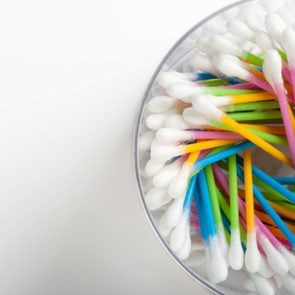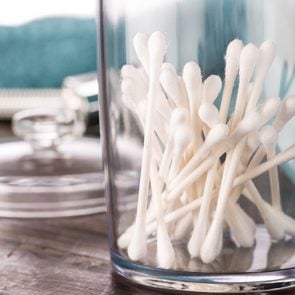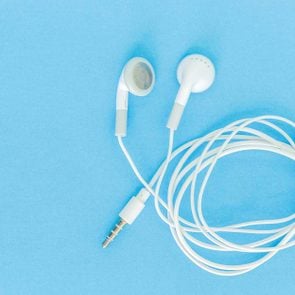10 Things to Know About Ear Wax Candles—And if They’re Safe
Updated: Nov. 22, 2021
You may have heard of earwax candles, a tool that some people claims removes excess earwax. But experts have been warning against the use of earwax candles for decades.
Earwax candles are not recommended
Virtually no one likes the feeling of excess earwax in their ear canal. Too much earwax can also become a cosmetic problem if it becomes visible.
Over the decades, people have come up with new and improved ways to remove earwax. It only takes a quick search on Instagram and other social media sites to see some of the wide array of earwax removal offerings available these days, from suction devices to electric Q-tips.
But what is earwax, is it really a problem, and should you try to remove it? If so, when and how? And why do some people seem to have more earwax than others?
We talked to experts to learn the answers to these questions and find out if earwax candles are safe, effective, or dangerous. In short, earwax candles and candling are neither safe nor effective.
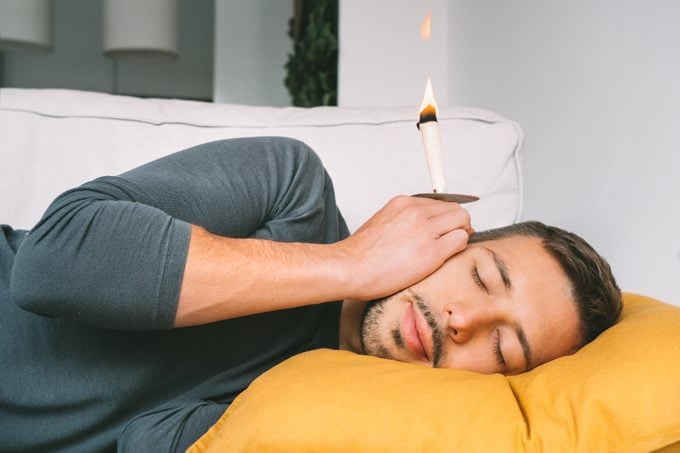
What are earwax candles?
Earwax candles are hollow candles typically made of beeswax, essential oils, honey extract, and organic linen that are often between 10 and 15 inches long. Earwax candles are used in a method known as ear candling, where the hollow earwax candle is placed in the ear and the opposite end of the candle is lit.
What are earwax candles supposed to do?
Earwax candling, also known as auricular candling, thermo-auricular therapy (TAT), or simply coning, is a type of alternative medical practice that some people believe enhances general health. Many people claim earwax candling also works to draw out excess earwax and other debris from the inner ear canal.
How precisely earwax candles help remove excess earwax and other contents of the ear canal remains unclear, though some people claim that when it is lit, the earwax candle creates negative pressure in the ear canal that acts as a vacuum to suck out earwax from the ear canal into the inside of the hollow candle.
Another theory to explain how ear candling works is that no wax actually comes out during the process, but the candle wax heats up and melts earwax that then comes out of the ear canal over the following few days.
Some people claim there is evidence ear candling works because you can see the removed earwax inside the earwax candle once you’re done using it. But experts say this isn’t earwax; it’s just the remains of the burnt candle.
Should you use earwax candles?
Experts and health authorities say earwax candling is not safe, and there is no credible research to indicate it is effective.
“I do not recommend ear candling under any circumstances whatsoever. There is no evidence that this practice is either safe or effective,” says Sarah Sydlowski, PhD, president of the American Academy of Audiology and audiology director at the Cleveland Clinic in Ohio. “It can actually damage the ear, including causing burns.”
What is earwax?
Experts say that while it might not be pleasant, earwax actually helps keep the ear canal healthy.
“earwax, or cerumen, is an acidic compound that has lubricating and antibacterial properties,” Dr. Sydlowski says.
“It’s produced by glands that line your ear canal. It’s usually slightly sticky to catch some particles that shouldn’t stay in your ear and move them out. It’s designed to keep your ear healthy.”
She says even though people tend to think earwax is “gross,” it’s actually a good thing. She adds earwax is often only a concern if you have too much of it, or it gets pushed down into the ear by devices like Q-tips.
How do you know if you have too much earwax, and should you try to remove it?
The experts say you can typically tell if you have too much earwax if it clogs or plugs the ear or interferes with your ability to hear.
But experts like Dr. Sydlowski say you should not try to remove excess earwax yourself.
She says removing earwax should always be conducted by a trained professional because when done at home by untrained individuals, any method can make the situation worse.
For example, she explains, if there is a hole in the eardrum, using water to try to remove it is unsafe because there is an open path to the middle ear space.
“Trying to scrape or scoop the wax out can result in a perforation to the eardrum, or a scrape in the delicate tissue lining the ear canal, which can introduce the opportunity for infection,” Dr. Sydlowski says.
“Do not use Q-tips, bobby pins, safety pins, keys, or any object smaller than your elbow in your ear.”
Is there any safe way to remove earwax at home?
The experts do not recommend trying to remove earwax at home or yourself. But they do note that earwax normally works its way out of the ear canal naturally.
“earwax naturally migrates out of the ear,” Dr. Sydlowski explains. “A small amount probably falls out on your pillow each night without you noticing.”
She says if you have to, the best way to “clean” your ears is to rub a slightly damp washcloth around the opening of the ear with a finger when showering.
Dr. Sydlowski adds that if you use hearing aids, earplugs, or earbuds for many hours each day, this can prevent the wax from working its way out the way it usually does. In those cases, she suggests you may need to visit a professional for ear cleaning on a periodic basis.
What other methods are commonly used to remove earwax?
Dr. Sydlowski says there are three primary ways earwax can be removed by a medical professional.
Removal by a curette
This method is performed using a small handheld tool that resembles a small spoon. A medical professional, such as a physician, nurse practitioner, or audiologist, shines a bright light into the ear and then uses the curette to scoop earwax out of the ear canal.
This method typically works best when earwax is not actually blocking the ear canal and the earwax is relatively soft. If earwax is too hard, a professional may need someone to use ear drops for a few days before the procedure to help soften the wax.
Irrigation
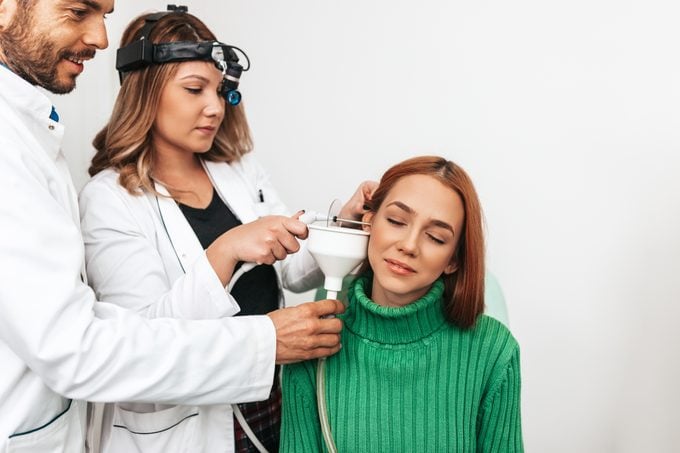
This method involves a professional using a small irrigation tool to physically flush the ear canal with water, washing wax out into a small bowl.
Suction
This method involves a professional using a small vacuum-like handheld device, often under a microscope, to suck earwax out of the ear canal. Suction is normally the best approach for removing earwax when the wax is blocking the ear canal.
Does ear candling have advantages over other methods?
Some people claim ear candling is a safer, cheaper alternative to having a medical professional remove earwax. Many advocates for ear candling also note that unlike other earwax removal methods, ear candling can be done in the convenience and privacy of your home.
But the experts say ear candling does not have any advantages over any other earwax removal method because it is not effective. Plus, it can cause damage to the ear, face, and neck.
Does ear candling have major risks?
According to the experts, ear candling is associated with a long list of potential risks. Some of the most common risks linked with ear candling include:
- burns to the ear canal, eardrum, middle ear, face, and neck
- ear injury from dripping hot wax
- bleeding
- excess candle wax that can clog or plug the ear canal
- punctured eardrums
- delaying how long someone waits to receive proper medical care for conditions that worsen without treatment, such as ear and sinus infections, cancer, hearing loss, temporomandibular joint disorders (TMJ)
- lighting hair or clothing on fire
- conductive hearing loss
Have any government agencies tried to stop people from accessing or using earwax candles?
Health authorities in several countries around the world have issued warnings about the safety of using earwax candles for decades. In 1996 the United States Food and Drug Administration (FDA) and Health Canada started taking formal actions against earwax candles and candling by targeting the people who manufacture, distribute, and sell earwax candles, such as issuing import alerts, injunctions, warning letters, and seizure of goods.
In 2017 the American Academy of Otolaryngology Head and Neck Surgery Foundation issued a public statement that updated their Clinical Practice Guideline regarding earwax impaction that state ear candling is contraindicated with Grade C evidence based on evidence gathered from numerous randomized trials and systemic reviews.


















